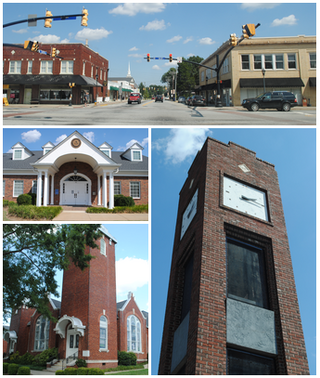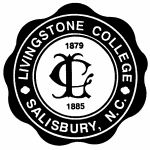
Simpsonville is a city in Greenville County, South Carolina, United States. It is part of the Greenville, SC Metropolitan Statistical Area. The population was 23,384 at the 2020 census, up from 18,238 in the 2010 census. Simpsonville is part of the "Golden Strip", along with Mauldin and Fountain Inn, an area which is noted for having low unemployment due to a diversity of industries including H.B. Fuller, KEMET, Sealed Air and Milliken. It is the 23rd-most populous city in South Carolina.

Fountain Inn is a city in Greenville and Laurens counties in the U.S. state of South Carolina. The population was 10,416 at the 2020 census, up from 7,799 in 2010. It is part of the Greenville-Mauldin-Easley Metropolitan Statistical Area.

The Old State House, formerly called the Arkansas State House, is the oldest surviving state capitol building west of the Mississippi River. It was the site of the secession convention, as well as the fourth constitutional convention when delegates agreed to ensure voting rights for freedmen and establish public education.

The Grand Circus Park Historic District contains the 5-acre (2.0 ha) Grand Circus Park in Downtown Detroit, Michigan that connects the theatre district with its financial district. It is bisected by Woodward Avenue, four blocks north of Campus Martius Park, and is roughly bounded by Clifford, John R. and Adams Streets. The district was listed on the National Register of Historic Places in 1983. The building at 25 West Elizabeth Street was added to the district in 2000, and additional structures located within the district, but built between 1932 and 1960, were approved for inclusion in 2012.

Livingstone College is a private historically black Christian college in Salisbury, North Carolina. It is affiliated with the African Methodist Episcopal Zion Church. Livingstone College is accredited by the Southern Association of Colleges and Schools to award bachelor's degrees.

Kanuga Conference Center is affiliated with the Episcopal Church, USA and the Anglican Communion. It is located on 1,400 acres (5.7 km2) near Hendersonville, North Carolina, with scenic Kanuga Lake at its center. Yearly, more than 35,000 guests utilize the facilities, which include the Conference Center, Camp Kanuga, Camp Bob, and the Mountain Trail Outdoor School.

The Ogle County Courthouse is a National Register of Historic Places listing in the Ogle County, Illinois, county seat of Oregon. The building stands on a public square in the city's downtown commercial district. The current structure was completed in 1891 and was preceded by two other buildings, one of which was destroyed by a group of outlaws. Following the destruction of the courthouse, the county was without a judicial building for a period during the 1840s. The Ogle County Courthouse was designed by Chicago architect George O. Garnsey in the Romanesque Revival style of architecture. The ridged roof is dominated by its wooden cupola which stands out at a distance.
Cannon Building can refer to:

South Carolina Highway 14 is a state highway in the U.S. state of South Carolina. The state highway runs 59.24 miles (95.34 km) from U.S. Route 76 Business in Laurens north to Interstate 26 (I-26) in Landrum. SC 14 connects Laurens and Landrum with Greer, the city between Greenville and Spartanburg where the highway crosses I-85 and US 29. The highway also parallels I-385 through Fountain Inn and Simpsonville, South Carolina in southeastern Greenville County. SC 14 is a part of the National Highway System between I-85 and US 29 in Greer.

Brooklandville House, or the Valley Inn, is a historic restaurant and tavern building, and a former inn, located in Brooklandville, Baltimore County, Maryland. It is a 2+1⁄2-story stone structure facing the former railroad and dating from about 1832. It is associated with the Baltimore and Susquehanna Railroad, which crossed the property just to the south.

This is a list of the National Register of Historic Places listings in Horry County, South Carolina.

Chesterfield Inn, also known as Chesterfield Inn and Motor Lodge, was a historic hotel located at Myrtle Beach in Horry County, South Carolina. The Chesterfield Inn consisted of two three-story, rectangular buildings constructed in 1946 and 1965. The 1946 building was of frame construction with a brick veneer exterior, with an end to front gable roof, and a raised basement foundation. It was an unusual example of Colonial Revival style architecture in the Myrtle Beach area.

Fairview Presbyterian Church is a historic church listed on the National Register of Historic Places near Fountain Inn, South Carolina. The present two-story building, constructed in 1858 in the Greek Revival style, was the fourth building constructed by the church, which was founded in 1786.

The Fountain Inn High School was a building that formerly served as a high school, located in Fountain Inn, South Carolina. It was designed by the Greenville, South Carolina based architectural firm Beacham and LeGrand and built in 1939. An example of New Deal-era design in the Moderne style, its construction was undertaken using grants by the Public Works Administration program.

Georgetown Historic District is a national historic district located at Georgetown, Georgetown County, South Carolina. The district encompasses 49 contributing buildings in the central business district of Georgetown. The oldest existing structure in Georgetown is a dwelling which dates from about 1737. There are approximately 28 additional 18th century structures as well as 18 buildings erected during the 19th century prior to the American Civil War. The existing structures—homes, churches, public buildings—are of both historical and architectural significance and are situated on heavily shaded, wide streets. The architecture ranges from the simplicity of early colonial, or Georgian, to the elaborate rice plantation era, such as Classical Revival. Notable buildings include the Georgetown County Courthouse, U.S. Post Office, The Rice Museum, Winyah Indigo Society Hall, Masonic Lodge, Antipedo Baptist Church Cemetery, Prince George Winyah Episcopal Church complex, St. Mary's Catholic Church, Kaminski Building, Mary Man House, Dr. Charles Fyffe / Middleton House, John Cleland / Allston House, Samuel Sampson / Henning-Ward House, Robert Stewart / George Pawley House, Martha Allston Pyatt /John S. Pyatt House, Eleazar Waterman / Withers House, and William Waties / Withers House.

Fountain Inn Principal's House and Teacherage is a historic home and teacherage located at Fountain Inn, Greenville County, South Carolina. It was built in 1935 as a home for teachers, and is the only remaining building associated with the Fountain Inn Negro School complex. The complex once included a grade school built in 1928, a high school built in 1930, a library, and the Clayton "Peg Leg" Bates Gymnasium, built in 1942. The school and its appurtenant buildings served the educational needs of Fountain Inn's African American community until the students of this community were enrolled in Fountain Inn High School in the 1960s.

Robert Quillen Office and Library is an historic office and library building located at Fountain Inn, Greenville County, South Carolina. It was built in 1928, and is a small one-story, one-room brick Neo-Classical Revival building with a distinctive temple front. Directly in front of the Office are a rectangular reflecting pool and a round pool, and a granite obelisk known as the "Monument to Eve." Born in 1887 in Syracuse, Kansas, Robert Quillen moved to Fountain Inn in 1911 to start the Fountain Inn Tribune. He wrote paragraphs, editorials, one-liners, and cartoons for the Baltimore Sun, the Saturday Evening Post, and The American Magazine. Quillen died after a prolonged illness on December 9, 1948.

The James A. Fulmer House is a historic house at 303 North Main Street in Fountain Inn, South Carolina. It is a 1+1⁄2 story brick building, with a side gable roof and projecting gable section on the left front. It is basically Tudor Revival in character, but also exhibits Craftsman details such as extended eaves and exposed rafter ends. Built in 1932 for a prominent businessman, it is one of the city's finest examples of Tudor Revival architecture, and a rare example of design work by Leila Ross Wilburn, one of the first female pattern-book architects.
The Kings Courtyard Inn, at 198 King Street in Charleston, South Carolina, is a boutique hotel with about 41 rooms.





















